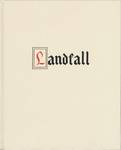wikifolio whispers p.m. zu Aurubis, Fielmann, Tesla, Alphabet-A, McDonalds, Amazon, VISA, Lockheed Martin, Coca-Cola und Pfizer
15.07.2022, 29912 Zeichen
JoshTh17 (2030VF): Kupfer wird in der Zukunft sehr häufig gebraucht. Hier eine Statistik. https://de.statista.com/statistik/daten/studie/586810/umfrage/kupfernachfrage-ausgewaehlter-zukunftstechnologien-weltweit/ (15.07. 09:50)
SanchoPanza (CRINTOR): Dividende kam rein. (15.07. 09:40)
CashcowFolio (LIBAEN): Tesla-Bestand vermindert, da in der kommenden Phase die Wirtschaft vermeintlich abkühlen wird. Die Annahme ist, dass sogenannte "Growth-Aktien" davon negativ beeinflusst werden. Daher wird der Bestand der Tesla-Aktien von 25 abgebaut und es bleiben lediglich 5 Tesla-Aktien im Wikifolio. Es ist wahrscheinlich, dass bei Zukäufen neuer Werte unter anderem auf Dividendenausschüttung geachtet wird. (15.07. 09:32)
Silberpfeil60 (AKTIEN01): Nicht erschrecken, heute gibt es einen Aktiensplit.
https://twitter.com/xorpio/status/1547823022035374080 Was bedeutet ein Aktiensplit konkret? Die Zahl der Aktien wird erhöht. Wer eine Alphabet-Aktie besitzt, hat nach dem Aktiensplit 20 Alphabet-Aktien. Der Wert der 20 neuen Aktien entspricht aber dem Wert der einen ursprünglichen Aktie. Eine Alphabet-Aktie würde auf Basis des aktuellen Kurses nach dem Split nur noch um die 118 Dollar kosten.
https://www.wiwo.de/alphabet-aktiensplit-2022-was-anleger-zum-split-wissen-muessen/28030540.html (15.07. 09:23)
Mettlmortl (TEC30P30): Ist eine Strategie mit immer nur zwei Aktien im Portfolio riskant? Nicht, wenn es die richtigen sind. Während der DAX in den letzten 30 Tagen 5% verloren hat, hat das wikifolio https://www.wikifolio.com/de/de/w/wftec30p30 über 7% zugelegt. (15.07. 03:50)
GoetzPortfolios (PERFORMG): Best Tech Stocks Of July 2022 The best tech stocks come from companies that are building the future. Whether they manufacture sleek mobile devices or develop the digital services you can’t live without, fast-growing technology stocks can set portfolios into hyperdrive. To help you take advantage of the massive opportunities in technology stocks, we’ve profiled the 10 largest companies that make up this sector by market capitalization. Types of Tech Stocks Each https://www.forbes.com/advisor/investing/stock-market-sectors/ can be broken down into several industries and sub-sectors. The tech sector is generally segmented into the following sub-sectors: Hardware. Companies like Taiwan Semi and NVIDIA manufacture physical products purchased by other manufacturers or consumers. Hardware can range from the microchips used in mobile devices to computing products bought by consumers. Software. Companies that develop and sell intangible computer programs or digital services are software producers. These pieces of software range widely, from social media, messaging or networking websites to software-as-a-service (SaaS) and cloud computing. Many tech companies are active in both hardware and software. Alphabet, for example, manufactures devices like phone and home assistants while also offering its Google search engine and a full suite of online productivity tools. Advantages of Investing in Tech Stocks https://www.forbes.com/advisor/investing/growth-stocks/ boost returns. Buying tech stocks lets investors dial up the risk in their portfolios to increase their returns. While risk certainly cuts both ways, buying fast-growing tech names is a very effective way of boosting returns in a low interest rate environment. Constant innovation. Tech companies live on the cutting edge of innovation. Owning shares lets investors participate in gains from breakthroughs that shape the computing and internet products consumers use everyday. Strong demand from indexing. Tech companies now compose over 20% of the https://www.forbes.com/advisor/investing/what-is-sp-500/ stock market index. With hundreds of billions of dollars pouring into index funds each year, that helps sustain growth for shares of the largest tech companies. Risks of Investing in Tech Stocks Low dividends. Most technology companies pay minimal dividends. Tech companies in the S&P 500 average a https://www.forbes.com/advisor/investing/how-to-calculate-dividend-yield/ under 2%. Many of these companies forego dividends to reinvest in their future growth. The biggest gains may be over. The biggest tech companies have already experienced explosive growth, and the best time to invest in them may have passed. Investors may be able to achieve higher returns by investing in smaller firms, though that introduces the risk of determining how to pick the biggest winners. Disruption. While companies that innovate can generate big profits, they may also face disruption of their business by new players with a stronger game. Shifting regulatory environment. Regulators can change the landscape for emerging technologies rapidly when things go wrong. Data breaches, revelations about data collection and other headlines spur regulators to pass new laws and regulations that can impede future tech sector growth. https://www.forbes.com/advisor/investing/best-tech-stocks/ (15.07. 02:35)
GoetzPortfolios (THEBANKS): The Best Financial Stocks Of 2022 When you buy financial stocks, you’re investing in the world’s leading providers of banking services, insurance, credit cards and a wide range of other financial services. Because the financial sector forms the core of the global economy, investors should strongly consider making financial stocks an important part of their portfolios. To help with your research into the best financial stocks, Forbes Advisor has compiled profiles of the 10 largest financial stocks by market capitalization. Understanding Financial Stocks Financial sector stocks belong to companies that offer investment banking, consumer banking, lending, insurance or credit card services. While banks are a big part of the story, they’re hardly the only sort of companies active in this key https://www.forbes.com/advisor/investing/stock-market-sectors/ The financial sector also includes insurance companies, investment firms, financial tech (fintech) startups and service providers for the industry. Some of the key categories in this sector include: Banking. Banks form the foundation of the financial sector, providing deposit accounts and loans to businesses and consumers. There are commercial banks, which mainly work with individuals and small businesses; investment banks, which work with large institutions and https://www.forbes.com/advisor/investing/high-net-worth-individual-hwni/ investors; and banks that do both. Insurance. Insurers sell and manage various types of insurance policies, like health, life, property and liability. Financial services. Companies that provide services like credit cards, investment management and accounting are considered financial services firms. This also includes support services for the sector, like https://www.forbes.com/advisor/credit-score/3-credit-bureaus/ and https://www.forbes.com/advisor/investing/bond-rating-agencies/ Fintech. Fintech covers companies working on new technologies for the financial sector, such as innovative payments companies and firms that develop https://www.forbes.com/advisor/investing/what-is-cryptocurrency/ technology. Advantages of Financial Stocks Solid long-term performance. Over the past 30 years, the financial sector’s earnings have grown significantly faster than the economy as a whole, allowing financial companies to pay above average https://www.forbes.com/advisor/investing/what-is-dividend/ to their shareholders and creating solid price-to-earnings ratios. While past performance is no guarantee of future success, it can be helpful to look backward when gauging investment opportunities. More regulated after the Great Recession. The financial crisis of 2008 exposed problems in the financial sector that governments around the world have worked to address with regulation. Today, financial firms are required to take more measures to avoid trouble, like holding higher minimum capital levels to protect against losses. This reduces their risk compared to the sector in the past. Chance for government support in recessions. The health of the financial sector has a direct bearing on the health of the global economy. As a result, financial firms can count on special support during a https://www.forbes.com/advisor/investing/what-is-a-recession/ or a financial crisis. When banks ran into financial trouble during the Great Recession, for instance, governments bailed many of them out. Benefit from rising interest rates. Today, interest rates are near historic lows. When they go up, however, banks, credit card companies and other lenders could increase their earnings by charging higher rates. Insurance companies can also earn more from their fixed income investments as bond interest rates go up. Innovation from fintech. Financial sector stocks have benefitted from innovations like https://www.forbes.com/advisor/investing/what-is-blockchain/, mobile payment apps and https://www.forbes.com/advisor/investing/what-is-robo-advisor/, laying the groundwork for more sector growth. Risks of Financial Stocks Cyclical performance during recessions. Financial stocks are cyclical and sensitive to economic downturns. When people and businesses are struggling, they take out fewer loans, invest less and spend less on their credit cards, reducing revenue for financial companies. Not to mention, they may stop making payments on their existing loans. Loan defaults can strain balance sheets. If a person or business cannot pay back their loan and defaults, the lender ends up writing off the debt. While this is part of a financial company’s regular business model, should things go really bad, defaults can spiral and put an otherwise solid company into bankruptcy, like when the housing bubble popped and turned into the 2008 financial crisis. Disruption from technology. While the fintech innovations are exciting for new up and comers, they could disrupt established banks and other financial companies, adding an extra risk for their long-term prospects. Government regulation can reduce profits. The financial sector is heavily regulated, and it’s possible for the government to take further action, like requiring banks to increase their capital reserves even more. While these actions make the sector safer, it hurts their profits because this is extra money they can’t lend out or invest. https://www.forbes.com/advisor/investing/best-financial-stocks/ (15.07. 02:28)
GoetzPortfolios (ARMAMENT): Defense companies get the bulk of their revenue from one customer -- the U.S. government. Fortunately, that customer has deep pockets and a long history of paying its bills. The federal government’s stability gives defense companies and investors some predictability when it comes to managing cash and projecting growth. Let's look closer at these standout companies: Lockheed Martin Lockheed Martin is the world's largest defense pure play. It’s the lead contractor on the F-35 Joint Strike Fighter, the world’s most expensive airplane. Lockheed’s legendary "Skunk Works" research facility in California is world-renowned, and the company has leveraged its research muscle to become a leader in advanced fighter planes, high-tech missiles, and cutting-edge electronics. Boeing Boeing is best known for its commercial airplanes, but its defense business is large enough to rank among the industry’s titans. Boeing makes several different aircraft and helicopters for the Pentagon and is also involved in space pursuits. The company's defense business has also branched out into autonomous submarines and other products. Northrop Grumman Northrop Grumman is responsible for stealth bombers and has a large space portfolio. The company is closely tied to the nuclear triad, which is a combination of nuclear missiles, bombers, and submarines able to strike back if the nation is attacked. General Dynamics General Dynamics is one of two primary military shipbuilders and has a portfolio of tanks and land vehicles that make it one of the go-to vendors for the U.S. Army. General Dynamics also has one of the largest defense-focused IT and services businesses, giving it some revenue stability at times when the Pentagon is cutting back on equipment purchases. Raytheon Technologies Raytheon Technologies doesn't make warships or fighters, but it has a role in a wide range of important military platforms led by other contractors. It is the product of the 2020 merger between Raytheon, a defense electronics and missile specialist, and United Technologies, which makes aircraft engines and a variety of other aerospace parts. Leidos Holdings Leidos Holdings is the largest government https://www.fool.com/investing/stock-market/market-sectors/information-technology/ (IT) company. It has also actively expanded into hardware, providing the electronics and brains for autonomous ships and building a strong portfolio of classified research capabilities geared for the intelligence and space community. Defense ETFs If you are bullish on defense but would rather not choose among individual companies, you can buy shares in one or more https://www.fool.com/investing/how-to-invest/etfs/ (ETFs) that cover the sector. Three primary ETFs are focused on defense: Invesco Aerospace & Defense (https://www.fool.com/quote/nyse/ppa/) SPDR S&P Aerospace & Defense (https://www.fool.com/quote/nyse/xar/) iShares U.S. Aerospace & Defense (https://www.fool.com/quote/bats/ita/) Defense goes electric For most of its history, the defense industry’s primary expertise was in metal-bending. There were only a few companies on Earth capable of building massive battleships, bombers, and tanks. But in defense, like the rest of the world, the value is increasingly going not to the companies that forge the steel but to the ones that provide the brains that go inside it. Defense electronics and https://www.fool.com/investing/stock-market/market-sectors/information-technology/cybersecurity-stocks/ is a growing piece of almost every company’s portfolio. It’s where a lot of the internal investment is going right now. Defense IT also remains a priority, with vendors scrambling to provide secure networks and data-rich communications systems to the Pentagon. Will conflict move defense stocks? The Russian invasion of Ukraine is likely to reverberate through the defense sector for years to come. The move reignited simmering Cold War-era tensions and provided a horrific reminder of the importance of a strong, modernized military. Investors need to understand that defense projects tend to have multiyear timetables, and there is likely not going to be much, if any, of a near-term sales boost due to the conflict. Although there might be opportunities for incremental new sales, particularly to U.S. allies in Eastern Europe, any gains tied to the conflict are not likely to be enough to alter the investment thesis on these defense titans. Large defense contractors generate much better margins on research and development into advanced new weapons systems than they do from selling one-off missiles or ammunition. If the U.S. government were to deemphasize research to fund active operations, conflict in Europe or elsewhere could actually be a negative to defense stocks. However, given the importance of research, that seems unlikely to happen. Investing in defense companies Many associate defense companies with tanks and guns, but the sector is defined more broadly to include companies that primarily cater to the Pentagon or other government agencies. The list includes weapons makers but also service companies that run IT networks, manage inventories, and perform other tasks for government agencies. The strengths of defense companies include: Ability to navigate the Byzantine government procurement process and having "armies" of employees with the security clearances necessary to do defense work. Predictable revenues, driven largely by the government annually providing a five-year outlook of planned purchases. https://www.fool.com/investing/stock-market/types-of-stocks/dividend-stocks/, which are due in part to research and development by some defense companies being funded by the government -- freeing up cash that can be returned to shareholders. How to find the best defense stocks The defense sector tends to be a stable group of companies with a few failures but also a few standouts. Here are some tips to consider when evaluating individual defense companies: Listen to the customer The Pentagon has an insatiable appetite for new equipment, but with aircraft carriers costing more than $10 billion apiece and F-35 fighters priced at $80 million or more each, there are limits to how much the government can buy. To figure out the likely winners and losers, pay attention to the budgeting process. Early in the year, the Pentagon sends a funding request to Congress, which then holds hearings to discuss priorities and make final allocation choices over the course of the spring and into the summer. An investor need not hang on every word, but the budget request, which is available on the Pentagon’s website, and commentary elsewhere can provide clues about which billion-dollar programs are an administration priority. Follow the numbers Companies will often highlight massive contract awards in press releases without explaining that those big award numbers are often spread out over many years and may be dependent on Congress approving the funds. Pay attention to these metrics when evaluating defense stocks: Free cash flow: This is important for any business, but https://www.fool.com/investing/how-to-invest/stocks/free-cash-flow/ can vary for defense contractors based on whether their projects are new or well-established. Companies often spend more in the early stages of a production contract, temporarily depressing cash flow. Corporate backlogs: Investors should pay close attention to corporate backlogs, which are future contracts that have been awarded but not yet executed. How much of that backlog has been funded and how much of it must go through the congressional budgeting process can vary greatly. Book-to-bill ratio: This metric compares the value of orders received in a given quarter with the amount billed and indicates a company's growth potential. A https://www.fool.com/investing/stock-market/types-of-stocks/growth-stocks/ should have a book-to-bill ratio of at least 1.0, implying that orders for future products are being booked at a rate that equals or exceeds what is being shipped today. Should you invest in defense stocks? Defense companies manufacture lethal products and can be involved in supporting clandestine operations or intelligence gathering that some find unsettling. If you don’t want to support those activities, then investing in defense stocks is not a great choice for you. Defense stocks, like many https://www.fool.com/investing/stock-market/market-sectors/industrials/, tend to be more plodding than high-flying https://www.fool.com/investing/stock-market/market-sectors/information-technology/ or https://www.fool.com/investing/stock-market/market-sectors/healthcare/biotech-stocks/ stocks. Defense stocks are best suited for income-oriented investors seeking steady growth and rising dividends rather than immense valuation increases. (15.07. 02:26)
GoetzPortfolios (CONSUME): The Best Consumer Staples Stocks Of July 2022 Consumer staples are the basic goods that people buy to support their everyday lives. Companies in this industry manufacture, distribute and sell products like food, beverages and personal hygiene products, which are typically less sensitive to economic cycles. To help you find the best consumer staples stocks, Forbes Advisor has profiled the 10 largest companies in this sector by market capitalization. Types of Consumer Staples Stocks Each https://www.forbes.com/advisor/investing/stock-market-sectors/ can be broken down into several industries and sub-sectors. The consumer staples sector is generally segmented into the following sub-sectors: Retail. These companies operate store chains, wholesale operations and e-commerce sites—basically any place where consumer staples products are sold. Food and beverage. Food staples include companies that make cereals, snacks and other dry goods. Beverages can include alcohol but are more often colas and energy drinks. Household products. Furniture, decor and cleaning products are all included in this category. Personal products. These include cosmetics and personal hygiene products, ranging from perfume and deodorant to mouthwash and toothpaste. Tobacco. This is a controversial member of the consumer staples family, given changing public attitudes toward smoking. But the tobacco subsector still represents big business for those companies that manufacture and sell cigarettes and related products. Advantages of Investing in Consumer Staples Stocks Good performance under any market conditions. People buy staples in boom times and in bust times, which makes consumer staples stocks good performers no matter what’s happening in the broader economy. That’s why they’re often considered defensive safe havens during a recession. Strong dividend income. Consumer staples stocks tend to pay solid https://www.forbes.com/advisor/investing/what-is-dividend/ and keep paying them over the long term. In fact, they are well represented among the https://www.forbes.com/advisor/investing/dividend-aristocrats/—firms that have increased their dividends annually for at least 25 consecutive years. Stability and longevity. The largest consumer staples companies have been in business for decades, some for even more than a century. Since they sell products that are always in demand, consumer staples stocks sustain long-term brand value—and that translates into long-term stock value for investors. Risks of Investing in Consumer Staples Stocks Low-margin, slow-growth companies. The profit margins on consumer staples products are razor thin, providing stocks in the sector with very modest opportunities for growth. In periods when the economy is doing well, consumer staples stocks may underperform other more dynamic sectors. Some brands are vulnerable to disruption. Certain segments of the consumer discretionary sector, especially retailers, are ripe targets for disruption by new e-commerce competitors. Moreover, growing online sales dilutes the power of well-known consumer staples brands. How to Buy Consumer Discretionary Stocks Investors can buy consumer discretionary stocks using a standard taxable brokerage account or a tax-advantaged individual retirement account (https://www.forbes.com/advisor/retirement/the-forbes-guide-to-individual-retirement-accounts-iras/). If you’re new to investing, or you’d like to change up your current investing accounts, be sure to check out Forbes Advisor’s list of the https://www.forbes.com/advisor/investing/best-online-brokers/ and the https://www.forbes.com/advisor/investing/best-investment-apps/ When buying individual stocks, it’s imperative to do due diligence and research the consumer discretionary stocks you’re interested in. Individual stock picking can be a very risky way of investing, and that means you should pursue this strategy with your eyes wide open. Financial advisors would recommend that non-professional investors take a diversified approach. Rather than buying individual stocks, experts suggest choosing a well-diversified consumer discretionary https://www.forbes.com/advisor/investing/what-are-index-funds/ or exchange-traded fund (https://www.forbes.com/advisor/investing/what-are-etfs/). Use the fund screener tools available on your brokerage platform to find the best options. https://www.forbes.com/advisor/investing/best-consumer-staples-stocks/ (15.07. 02:23)
GoetzPortfolios (DEMOGR): Best Healthcare Stocks of July 2022 Healthcare stocks belong to companies that develop pharmaceuticals, manufacture medical devices or provide medical care or health insurance. The sector’s strong numbers appeal to many investors: For instance, health spending accounted for almost 18% of U.S. gross domestic product (GDP) at the end of 2019, and it’s expected to top $6 trillion annually by 2028. If those numbers have you ready to load up on healthcare stocks, you’ve got thousands of options. To help you cut through the noise in your research, these are the 10 top healthcare stocks by market capitalization. Types of Healthcare Stocks Each https://www.forbes.com/advisor/investing/stock-market-sectors/ comprises many industries, each with their own nuances, and healthcare is no different. Four of the most important of subtypes of stocks in the case of the healthcare sector include: Drug stocks. These are companies that develop and manufacture pharmaceuticals used in the treatment and prevention of diseases or infections. Medical devices stocks. These include companies that design and manufacture medical tests, instruments and equipment, many of which are used in medical research and development processes, including by pharmaceutical companies. Health insurance stocks. This healthcare industry consists of companies that offer health insurance plans to meet the cost of healthcare for employers and individual consumers. It also includes pharmacy benefits managers (PBMs). Medical services provider stocks. This subgroup includes hospital operators, home health companies, managed care facility operators and other companies that provide healthcare services. Advantages of Investing in Healthcare Stocks As defensive stocks, healthcare companies provide steady returns in any market. Because people will always need healthcare, the healthcare sector provides very steady, consistent returns that are uncorrelated with the overall direction of the stock market. The U.S. healthcare sector is growing faster than the rest of the economy. Growth in the sector is being propelled by technological advances, an aging population and improving treatments for chronic diseases and conditions. Healthcare spending in the U.S. is seeing strong, sustained growth. National health spending is projected to grow at an average annual rate of 5.4% through 2028, reaching $6.2 trillion and 19.7% of the country’s GDP. Risks of Investing in Healthcare Stocks The rising costs of U.S. healthcare appear unsustainable. This phenomenon is nothing new, but there are increasing calls for government action and regulatory changes to do something about the ever-climbing cost of care and health insurance. Payers and patients are demanding better care at lower prices. Disruption by new players is a constant threat for established healthcare stocks. More and more tech companies are getting involved in the healthcare sector. Firms like Amazon may significantly disrupt old ways of doing business. Nimble biotechs may outperform stodgy huge pharmaceutical firms. Sustaining growth can be challenging for some types of healthcare stocks. Companies that make drugs and medical devices must convince health insurers and government agencies to continue buying their products. If these players fail to grant reimbursement approvals, their growth prospects can dim. How to Buy Healthcare Stocks If you have a regular brokerage account, you can easily add healthcare stocks to your taxable investment portfolio. If you don’t already, check out our listing of the https://www.forbes.com/advisor/investing/best-online-brokers/ to get started. Retirement investors can buy healthcare stocks in tax-advantaged retirement plans, like individual retirement accounts (https://www.forbes.com/advisor/retirement/the-forbes-guide-to-individual-retirement-accounts-iras/). But if you have a 401(k), you’ll likely instead have to look into mutual funds that focus on the healthcare industry, rather than individual stocks. When you’re considering a new investment, in healthcare stocks or any other market sector, doing your due diligence is always the first step. While the large-cap stocks listed above can be very safe bets, more volatile https://www.forbes.com/advisor/investing/small-cap-stocks/ biotech stocks can be incredibly risky investments. But really, buying any individual stock is a risky game. Instead, consider purchasing exchange-traded funds (https://www.forbes.com/advisor/investing/what-are-etfs/) or https://www.forbes.com/advisor/investing/what-are-index-funds/ that track diversified indexes focused on the healthcare sector. These are less swayed by the individual ups and downs of any one company but provide solid, steady long-term growth. That’s why financial advisors recommend them for most people. https://www.forbes.com/advisor/investing/best-healthcare-stocks/ (15.07. 02:20)
Was noch interessant sein dürfte:


Wiener Börse Party #692: Gottfried Neumeister Kurstrigger für Pierer Mobility Aktie, Erinnerung an Mariella Schurz, 5 Jahre Addiko
Bildnachweis
1.
wikifolio, Credit: beigestellt
, (© Aussendung) >> Öffnen auf photaq.com
Aktien auf dem Radar:Amag, Agrana, RHI Magnesita, Austriacard Holdings AG, Flughafen Wien, Addiko Bank, Rosgix, ATX, ATX Prime, ATX TR, Wienerberger, Bawag, AT&S, Österreichische Post, Palfinger, Semperit, Cleen Energy, Pierer Mobility, UBM, Wiener Privatbank, Oberbank AG Stamm, CA Immo, Erste Group, EVN, Immofinanz, Telekom Austria, Uniqa, VIG.
Random Partner
Strabag
Strabag SE ist ein europäischer Technologiekonzern für Baudienstleistungen. Das Angebot umfasst sämtliche Bereiche der Bauindustrie und deckt die gesamte Bauwertschöpfungskette ab. Durch das Engagement der knapp 72.000 MitarbeiterInnen erwirtschaftet das Unternehmen jährlich eine Leistung von rund 14 Mrd. Euro (Stand 06/17).
>> Besuchen Sie 68 weitere Partner auf boerse-social.com/partner
Useletter
Die Useletter "Morning Xpresso" und "Evening Xtrakt" heben sich deutlich von den gängigen Newslettern ab.
Beispiele ansehen bzw. kostenfrei anmelden. Wichtige Börse-Infos garantiert.
Newsletter abonnieren
Runplugged
Infos über neue Financial Literacy Audio Files für die Runplugged App
(kostenfrei downloaden über http://runplugged.com/spreadit)
per Newsletter erhalten
| AT0000A2WCB4 | |
| AT0000A3CT72 | |
| AT0000A37NX2 |
- Wie Cleen Energy, UBM, Pierer Mobility, RHI Magne...
- Wie AT&S, RBI, Andritz, Telekom Austria, Immofina...
- ATX charttechnisch: Potential für positiven Trend...
- Fazits zu Agrana, OMV
- Österreich-Depots: Pierer Mobility nach Neumeiste...
- Börsegeschichte. 12.7.: Addiko Bank, voestalpine ...
Featured Partner Video

Alles außer Fussball
Das Sporttagebuch mit Michael Knöppel - 23. Juni 2024 E-Mail: sporttagebuch.michael@gmail.com Instagram: @das_sporttagebuch Twitter: @Sporttagebuch_
Das Sporttagebuch mit Michael Knöppel - 23. ...
Books josefchladek.com

Index Naturae
2023
Skinnerboox

27000 Kilometer im Auto durch die USA
1953
Conzett & Huber

Twenty-one Years in One Second
2015
Peperoni Books





 Shōji Ueda
Shōji Ueda Valie Export
Valie Export Mimi Plumb
Mimi Plumb Helen Levitt
Helen Levitt Dominic Turner
Dominic Turner